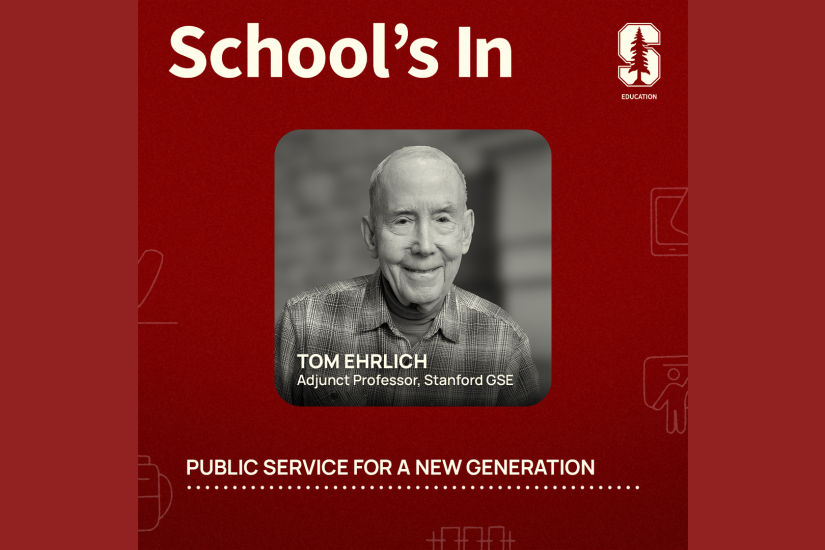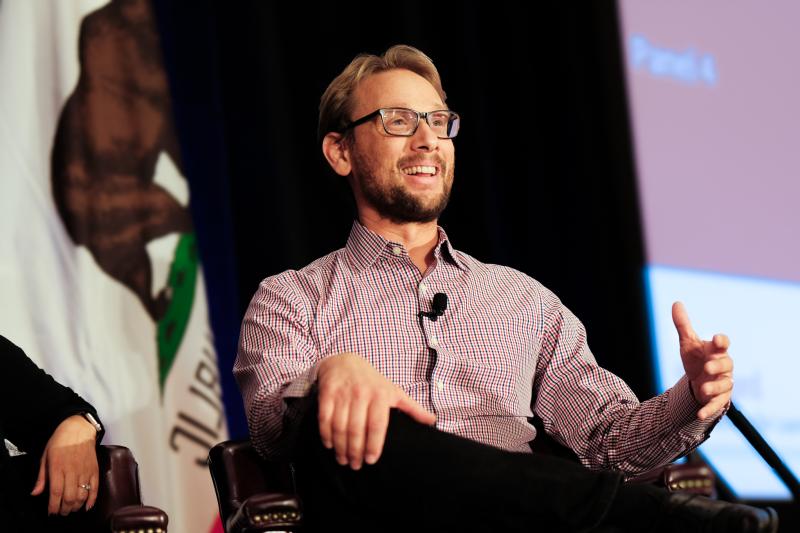
Online course attracts 40,000 participants — and questions from GSE students
Becca Constantine, a student in Stanford’s Policy, Organization and Leadership Studies (POLS) master’s program, was keenly interested in education professor Dan McFarland’s MOOC experiment.
McFarland was putting his Organizational Analysis class online — available free to literally anyone with a computer — as a massive open online course. At the same time, he required his students at the Stanford Graduate School of Education to take the fall 2012 course in what’s called a “flipped” format, in which they first watch online videos of lectures then come into class to discuss them with McFarland and a teaching assistant.
Because Constantine is hoping to go into higher education administration, she wanted to experience a MOOC, to see how it fits into the future of education. Over the last two years, Stanford and other universities have started offering MOOCs that are reaching tens of thousands of students globally. But questions abound. Will they be a substitute for “real-world” courses now being offered at colleges nationwide? And how well do students learn in an online format?
“I’d never been in an online course, and I’d never had to learn how to engage with a screen rather than a person,” Constantine said. “There were times when I wanted to stop and say, ‘Wait, I don’t understand,’ but I had to wait for the class.” A few Stanford students expressed frustration with the approach, but the majority, including Constantine, found the online lectures more organized than those delivered in a classroom. “There aren’t tangents and sidebars,” she said. “You get the material in a very directed way.”
The class was McFarland’s first foray into the MOOC world. He launched it after receiving a seed grant from the Office of the Vice Provost for Online Learning to offer the course. It was made available through Coursera, one of a handful of organizations now offering university classes as MOOCs, generally for free.
While the initial MOOCS were devoted to computer science subjects, McFarland’s class reflects how the approach is now being tried in the social sciences, the humanities and other disciplines. McFarland’s course examines theories of how organizations — businesses, schools, nonprofits, associations — are structured, how they create a product or effect a change, and how individuals behave within them.
The MOOC was a learning experience for McFarland, too. He had the same big-picture questions as Constantine, but he also needed to tackle the practical aspects of teaching 40,000 students scattered around the world instead of 40 seated in a single classroom.
McFarland spent much of the summer and fall recording 80 15- to 20-minute lectures, using the same material he feeds to his students at the Graduate School of Education. Short quizzes interrupted the lectures, and additional readings were offered at $80, discounted from $200. (The texts were made optional, because, as McFarland noted, $80 is a year’s salary for many people in developing nations.)
Online forums gave the MOOC students a means to help each other, and each week, McFarland answered the six questions MOOC students voted the most popular. Meanwhile, the Stanford students met in a real-world class to discuss the material, engage in group projects and collaborate on applying the material to cases. Both Stanford and MOOC students graded each other’s written papers, while the Stanford students received added feedback from McFarland and his TAs.
During the 10-week course, Coursera gathered statistics on the MOOC students and how engaged they were in the class.
“What I learned is that very few people want to write papers and take a college class,” McFarland said. “Also, a lot don’t have enough command of English to write an eight-page paper.” Of the 44,501 students registered for McFarland’s MOOC, only 2,375 took the final, which earned them a basic certificate if they scored 70 percent or better and spent time on the class’s online forums. Just 291 also wrote papers to receive an advanced certificate.
As the quarter progressed, McFarland learned how to be more engaging online: “Now I know how to act animated in front of a camera,” he said. “I gained a lot of respect for TV actors.” He had to alter the lectures because he realized that many students didn’t have the reading material: “Suddenly your lecture becomes the only text. Every minute they watched I wanted to give them something meaningful and succinct.”
He was also surprised by how international his MOOC students were — they represented every continent except Antarctica and 70 nations. And he stumbled across a number of technical problems, which Coursera staff and his team of teaching assistants — Charlie Gomez, Emily Schneider and Dan Newark — ironed out.
When the course ended and McFarland received the evaluations, he found that his MOOC students from outside Stanford were almost uniformly enthusiastic. Huda Midani, a human resources consultant in Damascus, Syria, wrote by email that the course “helped me understand organizational issues better and be better prepared to analyze them.” She added that “Professor Dan was really helpful and deeply cared about us (students).”
But some Stanford students, while liking the course content, were not fans of the online format. “There’s something about the computer that allows you to ignore it,” said Whitney Stubbs, a POLS student, who noted that she did chores while listening to them. “At least if I were in a lecture hall, I wouldn’t do my dishes or seed pomegranates. I’d take notes.” The problem could be that Stanford students were required to take the class, while the other students were there voluntarily. “Maybe we’re just less motivated to pay attention,” Stubbs said.
McFarland acknowledged that the challenge is to figure out how to make the class more appealing to the Stanford students — how to provide additional in-person experiences that will make them feel the expense of a Stanford education is worth their while. Still, he was struck by the benefits.
“I think the MOOCs are a great service to the world,” he said. “It brings knowledge to the masses and enables Stanford to do a global service a nonprofit could be proud of providing.”
As for how well students learn online, it depended on how much they put into the class. Inga Brandes, a higher education administrator in Hagen, Germany, who took the advanced track, felt that writing papers was the key to understanding the material. “If you just watch videos, you think, ‘Yeah, yeah, I got it.’ But when you have to write it down and explain it to someone, you really have to think about it,” she said by phone.
And while the MOOC is “not the same [as a classroom], it still gave you a feeling of a learning community,” she added, noting that being a MOOC student gave her an added benefit: The wide diversity of fellow students taught her about organizations in different cultures, where, for example, customs prohibit people from telling colleagues they made a mistake.
So, will MOOCs replace classrooms? POLS student Constantine, who wrote a paper about the MOOC for another class, thinks not. “MOOCs aren’t there to replace Stanford,” she said. She felt that the classroom, in which the students grouped together to discuss the material, was an essential part of the learning experience. “If they start to replace schools, it will be community colleges,” she said.
McFarland too doubts that MOOCs will replace all classrooms or call into question the higher education system’s existence: “Universities are expanding their functions and audiences over time. Stanford reaches a new population in the world through MOOCs, and they have distinctive interests and needs. Even if MOOCs do replace some teaching efforts in universities, the universities will continue to perform research, partner with industry, conduct outreach with communities, and develop social networks of alumni and societal stakeholders.”
Mandy Erickson, a Bay Area freelance writer and editor, contributes stories to the Stanford Graduate School of Education.



